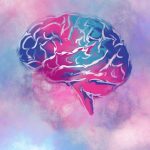
An overwhelming majority of older Americans think health insurers and Medicare should cover the cost of weight-loss medications like Ozempic, Wegovy or Zepbound, a new survey has found. More than four out of five older adults (83%) think insurance companies should pay for drugs that help obese people manage their weight, according to poll results from over 2,600 people ages 50 to 80. And about three in four (76%) believe Medicare should cover weight-loss drugs, researchers at the University of Michigan National Poll and Healthy Aging found. “Our data show the strong awareness and interest in these medications, and in access to them through insurance, alongside coverage for other weight-focused care including nutrition counseling, exercise programs and bariatric surgery,” said researcher Dr. Lauren Oshman, an obesity medicine specialist and associate professor in the University of Michigan Department of Family Medicine. Weight-loss drugs have been in the spotlight since the approval of Wegovy, an injectable drug initially approved for treating type 2 diabetes under the name Ozempic. The FDA has since approved Zepbound for weight loss, a diabetes drug previously approved under the name Mounjaro. These new medications are pricey, costing more than $12,000 a year for people who pay out of their own pockets. But the drugs are nearly as effective as bariatric surgery in helping people with obesity lose 10% or more of their… read on > read on >


















